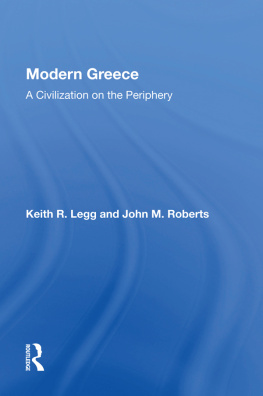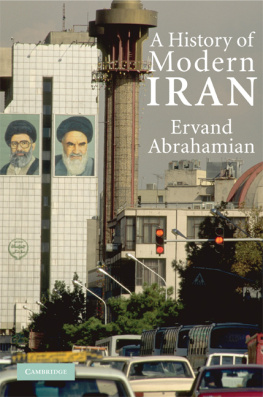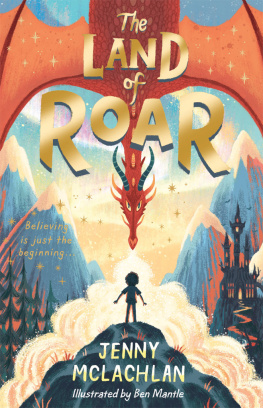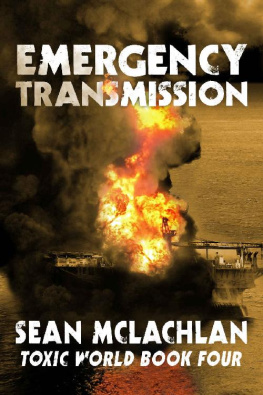ROUTLEDGE LIBRARY EDITIONS: HISTORY OF THE MIDDLE EAST
Volume 3
The Boundaries of Modern Iran
First published in 1994 by UCL Press
This edition first published in 2017
by Routledge
2 Park Square, Milton Park, Abingdon, Oxon OX14 4RN
and by Routledge
711 Third Avenue, New York, NY 10017
Routledge is an imprint of the Taylor & Francis Group, an informa business
1994 Keith McLachlan and contributors
All rights reserved. No part of this book may be reprinted or reproduced or utilised in any form or by any electronic, mechanical, or other means, now known or hereafter invented, including photocopying and recording, or in any information storage or retrieval system, without permission in writing from the publishers.
Trademark notice: Product or corporate names may be trademarks or registered trademarks, and are used only for identification and explanation without intent to infringe.
British Library Cataloguing in Publication Data
A catalogue record for this book is available from the British Library
ISBN: 978-1-138-22002-7 (Set)
ISBN: 978-1-315-39118-2 (Set) (ebk)
ISBN: 978-1-138-22548-0 (Volume 3) (hbk)
ISBN: 978-1-138-22559-6 (Volume 3) (pbk)
ISBN: 978-1-315-39938-6 (Volume 3) (ebk)
Publishers Note
The publisher has gone to great lengths to ensure the quality of this reprint but points out that some imperfections in the original copies may be apparent.
Disclaimer
The publisher has made every effort to trace copyright holders and would welcome correspondence from those they have been unable to trace.
The boundaries of modern Iran
E DITED BY
Keith McLachlan
Keith McLachlan and contributors 1994
This book is copyright under the Berne Convention.
No reproduction without permission.
All rights reserved.
First published in 1994 by UCL Press.
UCL Press Limited
University College London
Gower Street
London WC1E 6BT
The name of University College London (UCL) is a registered trade mark used by UCL Press with the consent of the owner.
ISBN:
1-85728-125-X HB
1-85728-126-8 PB
British Library Cataloguing in Publication Data
A catalogue record for this book is available from the British Library.
Typeset in Palatino.
Printed and bound by
Biddles Ltd, Guildford and Kings Lynn, England.
Contents

Iran and neighbouring states.
This volume reviews the key issues affecting Iranian boundaries and offers an analysis of the evolution of the countrys frontiers over the historic period. In all, its constituent chapters make up a detailed summary of the emergence of Iranian boundaries and state territory and the tensions that still affect them. Each of Irans borders with its principal neighbours is discussed in separate chapters. Abbas Maleki, Deputy Minister in the Iranian Ministry of Foreign Affairs, examines the northern frontier zone from an Iranian standpoint in .
These various studies demonstrate that Irans borders with its neighbours have been ever-fluctuating in recent centuries and that the hurried frontier delimitations of the late 19th and early 20th centuries have left a legacy of problems, not all responsive to immediate solutions. At a time of great uncertainty in the wake of the end of the Cold War, the uneven strides made towards instituting a new international order and Irans search for identity as a post-revolutionary nation-state, security for the Iranian state is more closely than ever bound up with confidence in firm and settled frontiers. This book suggests, however, that Iran will not easily escape its difficulties and that tensions will persist in respect of profoundly complex boundaries such as those along the Shatt al-Arab and on the continental shelf of the Persian Gulf.
The opinions expressed in this volume are those of the authors. Maps showing international boundaries are for illustration only and should not be regarded as authoritative.
Acknowledgements are due to a number of people. The Geopolitics and International Boundaries Research Centre is indebted to the Institute for Political and International Studies in Tehran and the Department of Geography at the University of Tehran for their co-operation in staging the original seminar that inspired this publication, held at SOAS in December 1991. I thank Patricia Toye and Liz Paton for their copy-editing and Catherine Lawrence for her cartography. Thanks also go to Roger Jones and Nick Esson of UCL Press for publishing this collection.
It should be noted that transliteration in this book has, wherever possible, been made internally consistent and has been simplified. However ; authors have been given discretion to employ the system of transliteration of their choice where they have felt strongly about the English language spelling of particular place names and real names.
Chapter One
Introduction
K EITH M C L ACHLAN
Traditional regions and national frontiers
Iran has functioned for at least 5,000 years as a state and the centre of an empire. During this considerable period its boundaries with its neighbours have been relatively fluid ( Nonetheless, despite the powerful influences working against the need for hard and fast borders, of which Islam is perhaps the principal one, contemporary Iran under both the Pahlavi regime and the Islamic republic has adopted very clear policies towards defining and protecting state territory.
The administration of Iran has historically been plagued with difficulties of exerting authority outside the main areas of population and, therefore, in fixing its national frontiers. Iran is a vast and diverse country of 1,648,000km2, only a tenth of which is under settled forms of economic use. The rest is desert, steppe and high mountain. In many ways Iran was until the early 20th century a set of diverse ethnic and linguistic groups unified under a single government and sharing a common literature, social ethos and culture. The largest single provincial region by population size was Azerbaijan, where there was a concentration of Azhari speakers of the Turkic group of languages. Other coherent areas with a regional consciousness could be defined, including Kurdistan in the west, the Arab zone of the Khuzistan lowlands in the southwest, the Turkmen steppe of the north and the Baluch area of the southeast.
The Iranian territorial inheritance from the Qajar dynasty in 1921 was much reduced from earlier periods and weakly defined in international practice. This volume attempts to examine the evolution of the countrys international boundaries in the contemporary epoch during which Iran has been buffeted by an apparently unending series of international and internal crises.
The territorial consolidation under Riza Shah
Riza Khans and Sayyid Zia al-Din Tabatabais coup detat against the Qajars in February 1921 gave Iran a short breathing space of strong central control during which the idea of a modern nation-state was imposed on the country and the national borders made generally secure. This experience was important for Iran because it enabled the government to tie its many varied provinces firmly to the centre. Beginning in 1921, Riza Khan put down regional revolts by the tribes of the Khamseh and others before beginning the process of reducing rebellion elsewhere in the west. Riza Khan took advantage of the Russian withdrawal from Iranian soil in September 1921 to put down the revolt of Kuchik Khan in the northern province of Gilan, marking the clear beginning of the centralization process. In the following year Riza Khan attacked rebel forces in Azerbaijan and Kurdistan and settled the northeast province of Khorasan. The process continued in 1923 in the south where the main tribes, the Bakhtiari and Qashqai, were put down and Shaikh Khazal, the regional ruler of Khuzistan, removed to Tehran.














